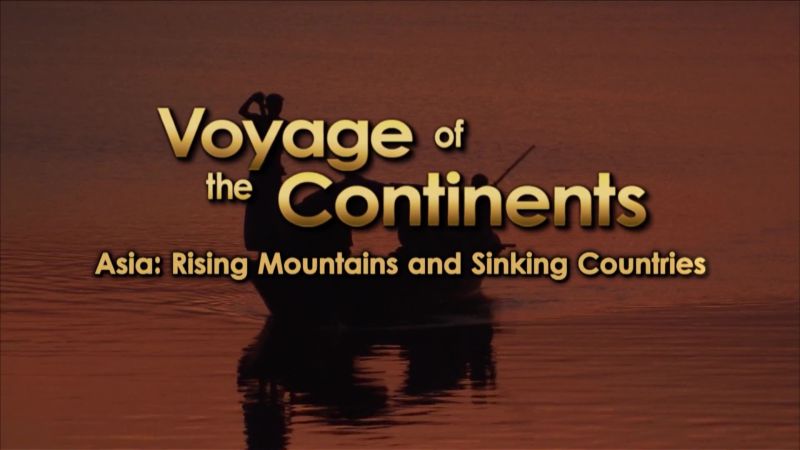Voyage of the Continents episode 3: Asia is a closely watched continent. Teams of scientists keep a constant eye on it. Asia is a continent on high alert. The Indian sub-continent that smashed into the mainland eons ago is still pushing the Himalayas to ever greater heights. The tectonic activity in the south of the continent extends as far as Nepal and the Tibetan plain. Off the east coast, Japan is in the grip of tectonic forces that shake its islands with devastating force while Indonesia is ravaged by volcanoes. China is also affected and, like Japan, is exposed to daily earthquakes. The volcanism of the entire region, in Japan and in Indonesia, is both a danger and a resource, and many risk their lives to exploit it. These tremendous phenomena are the fruits of the ceaseless Voyage of the Continents. In this episode we chart the present and look into the future of the planet’s most explosive continent.
Over the many billions of years of Earth’s history, our planet has never stopped changing. Massive tectonic forces have sculpted and resculpted our world in a never-ending journey. Do you know that Scandinavia was once in the southern hemisphere? And that in the Ardennes we can find coral reefs like in the Bahamas? Or that the largest ocean in the world, the Pacific is endangered? Since its formation 4.6 billion years ago, our Earth has been subjected to forces of incredible power. Around a still hot core, the earth’s crust, driven by mantle convection movements, is in perpetual evolution, tirelessly redrawing the map of the continents and oceans.
As landmasses assemble and separate, they fuel volcanoes and spark earthquakes, building mountains and tearing valleys. They come together or separate on average by a few millimeters or centimeters per year, sometimes more. On the scale of geological time, they shape the reliefs and deep architecture of the continents. We see the Earth, eons in the making, through the eyes of geologists and other scientists.
The history of these continents is part of a “tectonic waltz” of land and sea, a concept as important for the history of the Earth as Darwin’s theory of species for the evolution of Man. Tectonics have created life– and destroyed it as well. Huge volcanoes and devastating earthquakes continue to dominate human history. This is a story of high drama and intense beauty, the interaction of geology and life. A true Voyage of the Continents.
Voyage of the Continents episode 3
Asia boasts vast diversity in its people, cultures, geology, and natural resources. One of the region’s most captivating features is its tectonic activity. The movements of tectonic plates over millions of years have shaped Asia’s landscape, creating towering mountain ranges, expansive deserts, and fertile river valleys. However, these same forces have caused catastrophic earthquakes, volcanic eruptions, and tsunamis, which have claimed countless lives throughout history.
The collision of several tectonic plates drives Asia’s tectonic activity. For example, the Indian Plate moves northward, colliding with the Eurasian Plate, which has formed the Himalayan mountain range. This collision has resulted in the tallest peaks on earth, including Mount Everest, K2, and Kangchenjunga.
Asia’s tectonic activity extends beyond the Himalayas to the Pacific Ring of Fire, a region with intense seismic and volcanic activity that circles the Pacific Ocean. This zone includes Japan, the Philippines, and Indonesia, which are susceptible to earthquakes, volcanic eruptions, and tsunamis. These natural disasters have caused extensive damage to infrastructure and claimed many lives.
Despite the dangers posed by tectonic activity, Asia’s geological features provide significant benefits to its inhabitants. The region is rich in mineral resources such as coal, oil, and natural gas, which are crucial to the economies of countries like China and India. The fertile river valleys, such as the Ganges and Yangtze, have supported civilizations for thousands of years, providing water for irrigation, transportation, and food production.
The tectonic activity of Asia is both a blessing and a curse. It has shaped the region’s landscape and provided valuable resources, but it has also led to devastating natural disasters that have claimed many lives. As we continue to study Asia’s tectonics, we must also work to reduce the risks posed by earthquakes, volcanic eruptions, and tsunamis and ensure the safety and well-being of the people who reside in this diverse and captivating region.




